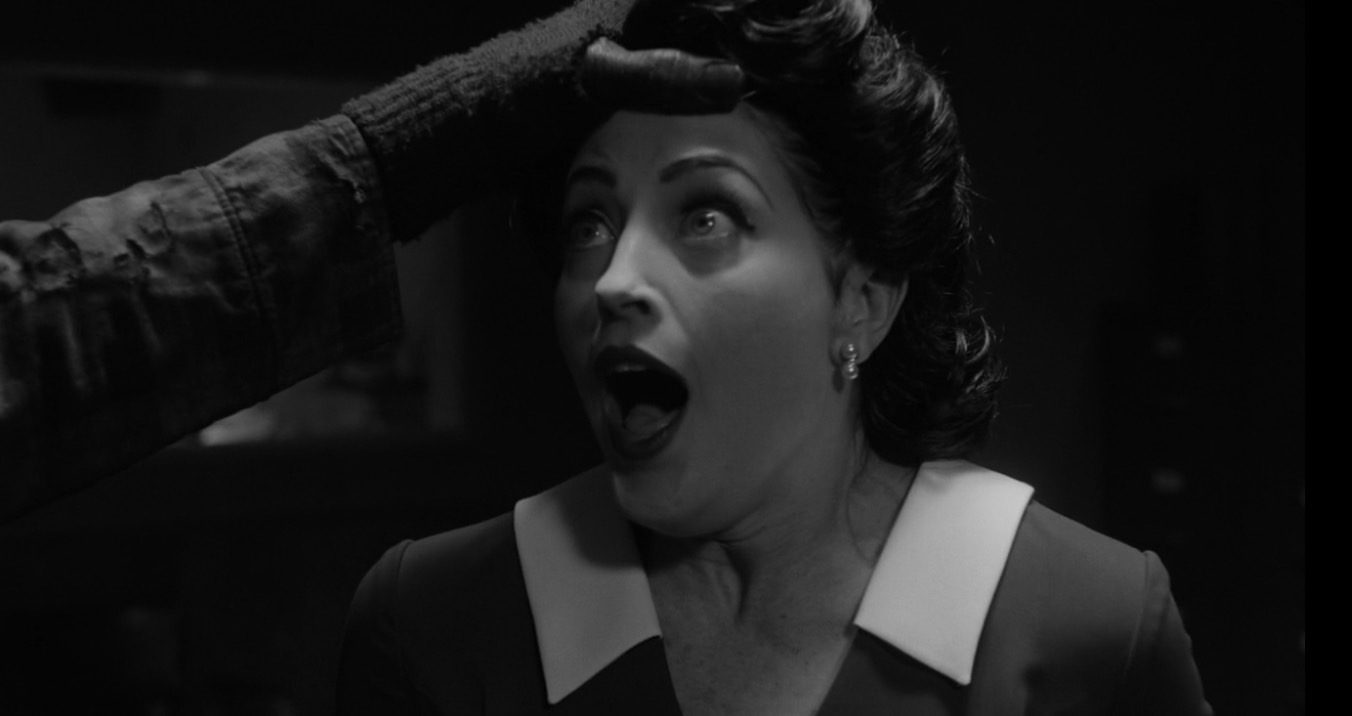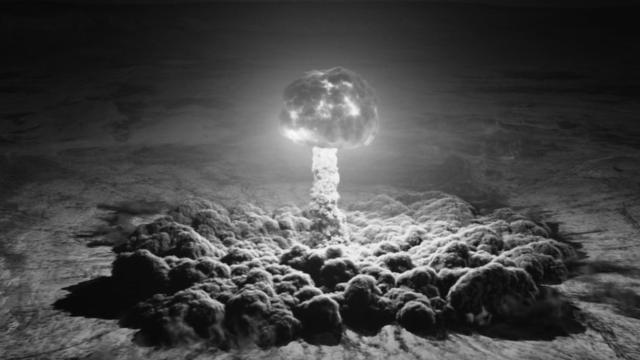There have been eight episodes of Twin Peaks: The Return so far. With the show on holiday hiatus until July 9, now seems like the perfect time to reflect on the amazing, baffling, terrifying things we’ve seen so far, seemingly beamed directly from David Lynch’s astonishingly highly-caffeinated brain.
This is your brain on Twin Peaks. Still: Showtime
The week-long break from Twin Peaks‘ wonderful madness also means that if you’re behind, you can catch up — or if you’re already up to speed, you can re-watch the existing chapters the way Lynch filmed them: as one long continuous story. For those who have yet to watch, we’ll drop this here.

The original Twin Peaks became a pop culture sensation because it was so unique. It was a supernatural murder mystery with memorably offbeat characters. It had its own distinct sense of style and, despite its grim premise, its own distinct sense of humour. It was cinematic in a way that few TV shows had ever been before, and though it followed a narrative that was essentially linear, it wasn’t afraid to challenge its audience — which, for a time, was massive and enraptured. No other show at the time could have gotten away with, say, a parallel realm occupied by a small dancing man who communicated via riddles spoken backwards.
That was the early 1990s. But today, audiences have seen not just Twin Peaks, but all its imitators and every other weird show and movie that’s been screened or streamed since. With that in mind, there was no way Lynch was just going to roll right back into Twin Peaks’ Double R Diner and pick up exactly where he left off 25 years earlier. Instead, he’s used the original show as a foundation and reference point for, once again, a groundbreaking series that pushes the boundaries of what TV can be.

It doesn’t get any bluer.
Of course, groundbreaking, boundary-pushing TV is kind of the norm nowadays, as anyone who has watched American Gods, American Horror Story, The Handmaid’s Tale, Game of Thrones, the first season of True Detective, and so on can attest. With the rise of outlets like Netflix, Amazon, and Hulu, there’s never been more support for projects that attract adventurous audiences. Even Twin Peaks‘ polarising second season — which began to meander as it went on, losing confused viewers along the way — doesn’t seem that bizarre anymore. (Twin Peaks: Fire Walk With Me is and eventually, after some back-and-forth, Showtime got on his level.
With eight episodes culled from that giant pile of new Twin Peaks footage now out in the world, Lynch’s commitment to his vision is very apparent. Every exhilarating episode has its own pace and tone, every segment comes with its own specially tailored filming style and sound design, and it’s never guaranteed which of the many storylines will get an update. And yet, amid what sometimes seems like a jigsaw puzzle of chaos, there’s coherency that’s tied into the show’s central character — or characters, really, since Kyle MacLachlan’s Agent Cooper has essentially split into two men, evil “Mr. C” and dopey Dougie Jones, thanks to the strange workings of the Black Lodge. Like Laura Palmer’s murder back in the day, Cooper’s journey is what propels the show. But this time, it involves so much more than just an FBI investigation.

Interesting choice of decor, Gordon.
It’s very tempting when you’re watching Twin Peaks to try and make connections and look for clues. After all, the Log Lady told Hawk, and us by extension, to “watch carefully.” Does Dougie’s employer, Lucky 7 Insurance, have something to do with the New York City coffee shop (with the cups marked “7”) visited by Tracy before her fateful night with Sam and the glass box? When the Giant tells Cooper to remember “Richard and Linda,” does he mean crazy hit-and-run driver Richard Horne and the “Linda” that’s mentioned in passing when we visit the Fat Trout Trailer Park? (If so, what’s the connection there… and is Richard Horne the son of Audrey or what?) When the One-Armed Man asks “Is it future or is it past?”, does he mean some of the timelines on the show that seem to line up aren’t actually simultaneous?
I could go on for 20 more paragraphs, plus add another 20 paragraphs of just outright questions. Like, how did Dougie’s wedding ring get inside the headless corpse that has Major Briggs’ fingerprints, but is too young to actually be Major Briggs? What did Mr. C do to Diane that has her so scared and angry, even 25 years later? Why are there so many bitchy blonde wives on the show? When did the Renault family, who’d already cornered the local market in drug-running and pimping, turn the Roadhouse into a destination stage for achingly hip touring bands?
Some of those connections will no doubt be made more clear. Some of the questions will be answered. And some of them will be forgotten as Twin Peaks‘ bigger themes begin to take over the show. Episode eight raised the stakes and offered a clear reminder that while what we’re watching might be a TV show, it’s also a meta-narrative that combines a taste of nearly every David Lynch project that’s come before (every week, there’s something new, but part eight’s heavy Eraserhead vibes really drove that point home). It also made the bold movie of suggesting that the nuclear bomb had something to do with the creation of Bob (and/or that Bob had something to do with the creation of the nuclear bomb), and illustrated the blast with a sequence that was more experimental and surreal than anything seen on the show before..
Plus, it was, without a doubt, the most terrifying Twin Peaks episode we’ve yet seen, and that includes all of Leland Palmer’s song-and-dance numbers from seasons one and two. Bob may be the OG villain, but those otherworldly Woodsmen — who’ve been skulking around for a few episodes, but really showed themselves in episode eight — are basically nightmares come to life.

Got a light?
Though you can’t argue with Lynch’s sure-handedness in making his choices, the show hasn’t been without flaws. That “sparkle” the kids in Twin Peaks are snorting nowadays might be magical stuff, but Becky’s orgasmic reaction after a couple of toots was pretty silly. A drawn-out scene of floor-sweeping to the beat of “Green Onions” felt self-indulgent. The exaggerated simpleton-ness of Lucy and Andy — which was cute in the 1990s — is now kind of grating. And the show still isn’t very diverse. There’s Deputy Hawk, of course, but aside from Ernie Hudson’s brief appearance as an Air Force bigwig, the only memorable character who happens to be non-white has been Nafessa Williams… as Jade, Dougie’s favourite prostitute.
There are still 10 episodes to go, and there’s literally no telling what the show will twist and turn into next, or what it will introduce, subvert, or reveal. A blistering performance by the Nine Inch Nails? Polite chit-chat about pie? A talking brain mounted atop a tree? An ice pick-wielding assassin? A frog-legged insect that climbs into the mouth of a sleeping teenager? A man roaming around town asking for a light and brutally crushing skulls? Sure. Yes. As the Woodsmen would say: Drink full and descend.
